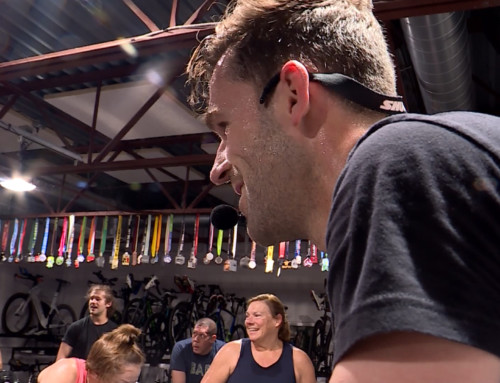As per my new whip write up, I upgraded to a ROTOR 2INpower MAS (pictured below) and it took some time to figure out how to export ROTOR FIT files from the app and get them into Training Peaks and Strava. I thought I could do it from the app on my phone, turns out (at this point in time), you can’t. A little wonky, but whatever. Here is the solution.

Not really useful to have the data unless it gets to TP. And if it isn’t on Strava, it didn’t happen!
Ha.
While I can sync the ROTOR to my Suunto Spartan Ultra via Bluetooth (which would then send watts to TP), only the total power number gets sent. The ROTOR app captures L/R power, OCA, OCP, torque effectiveness, pedal smoothness . . . a bunch of custom stuff that no watch is set up for (yet).
How to Export ROTOR FIT Files from the ROTOR App (iPhone + iTunes) [3:03]
If the video doesn’t display, view it here.
No idea what the Android corollaries are, but probably similar.
If this changes or you find some better way … leave a comment. Will update.
Power on.
#
More info on the additional data captured by the ROTOR Power app
Why I say use the ROTOR app then export ROTOR FIT files to another program

Left/Right balance
Different leg lengths, hip disequilibrium or simply stronger/weaker muscles in one of your legs lead to left/right irregularities. Here you have the chance to optimize your pedal stroke to the extent that both legs deliver 50% of pedaling performance.
Pedal smoothness
This function demonstrates the fluidity of your legs’ movement. It’s the relation between average and maximal force during a pedal stroke, measured in percentages. Pedal Smoothness is simply average power versus maximum power.
Torque effectiveness
The ratio of total torque versus positive torque. During a complete pedal rotation, data gets sampled to measure force and crank velocity. Resulting values will determine your torque effectiveness.
Torque 360º
Represents your distribution of force throughout a pedal rotation. This metric reveals how your force is applied to the pedal during 360º of pedaling and yields your Optimum Chainring Angle.
Optimum Chainring Angle
Your OCA value indicates the angular position where the work from pedaling is concentrated. This will help you understand how you pedal and will enable you to optimize the position of your Q-Rings.






Nat, thank you so much for this, I would NEVER have worked this out! ROTOR is great hardware, but the software and info sucks! Ride on! Tim
You’re welcome, Tim. Was so lost for a bit myself. Glad it’s helped.
It really has, I have the app running fine on my iPhone7 and used Torque 360 this morning. Now I know how to obtain the files off this. However I cannot get the software to run on OSX High Sierra. I have installed Mono as they ask. Shame the developers could not make an OSX installation that runs on 64bit architecture! I’ve tried several times to install using the installer package but no joy, I get a 32/64bit error in terminal.
Ah man, now that’s over my head. I haven’t used any of the desktop software. My bike fitter has it setup. I think ROTOR outsourced the mobile and desktop app development years ago … and no one has touched it since.
Nat, thank you for your replies, your original post really helped me! I hope you have a very good day. All the best, Tim
Hi there,
I followed your instructions, but it appears my workouts are being saved as “.csv” as opposed to “.fit” files. Because of this Training Peaks can’t upload the file.
Any idea how to get the files saved as “.fit”?
Thx
R
No idea … perhaps there’s an option here? https://www.dcrainmaker.com/tools
Or could you upload to Strava, then download FIT from Strava?
Hi Richard,
From memory (I haven’t used the Rotor App to record a ride for a while) the workout saves as a .CSV whereas the “Ride” records as a .FIT file, ready for export to TP, Garmin Connect or Strava.
I used to use a free third party converter for .CSV to .FIT files, which worked OK.
If you Google that you should be able to convert and rides you wish to from .CSV to .FIT for export.
Good luck!